The Cailleach is a very interesting figure in Gaelic even possibly Celtic myth and beyond.The above video represents some of the Cailleach’s folk stories, the first about the priest who tries to count the bones in her house and dies of old age because he can’t count them all there are that many. The other part of the tale about the encroaching of man signified by the barking dog and her need to renew herself to become young again.
In the previous post I discussed some of the background to the Cailleach and some of the folk tales that relate to her that justify, in a very small way the significance of this figure in Gaelic and possibly Celtic heritage. In modern-day Scotland the celebration of the Cailleach has almost all been forgotten but yet some elements remain…
A couple of practices hint to where the Cailleach may fall in the folk calendar customs of Scotland if you are interested in reviving her memory and including her in your practice in whatever ways that may entail.
Modern day practices that I know of include the shrine to the Cailleach deep inside Glen Lyon. Glen Lyon (Gleann Lìomhann- translates as “valley of Lugh”), is in Scotland, within this is a place known as the Glen Cailleach, a very small valley named after the Cailleach. Like all places in Scotland in remote areas, access is only accessible via a long hike on tracks and boggy moorland surrounded on all sides by craggy hills of the typical Scottish variety. In the middle of the Glen is a Sheilling called “Tigh Nam Bodach”. This is the only, as far as I know, original shrine to the Cailleach, folklorists suggest its use dates back a very long time. The area is currently under threat from a hydro scheme and for this reason it has been put into the public awareness.
Tigh nam Bodach translates to “house of the old man” and houses stones cut into roughly human shapes. The biggest of which represents the Cailleach herself. While the other stones represent the Bodach (the Cailleach’s consort) and translates to “the old man” and Nighean (which means daughter). There are also a number of smaller size stones unnamed but believe to represent other children. Local people take the Cailleach and her family out of the sheilling every Beltainn and place them back in the Sheilling every Samhuinn. This rite is said to protect the cattle and deer from being harmed over the summer and winter months thus providing those in the valley with plenty. This has clear links to the previous post discussion.
It’s interesting to note at this point that Ben Nevis (where the Cailelach is said to reside) has a mountain very close to it named “Am Bodach” again linking the two in the environment and geography of place. Bodach occurs in a variety of place-names across the Scottish Isles including Loch nam bodach ‘loch of the old man’ on Lewis, Carraig nam bodach ‘rock of the old man’ on Mull, Sloc nam bodach ‘hollow of the old man’ on the Isle of Colonsay, Leanag nam Bodach ‘the little meadow of the old men’ on Arran, Allt nam bodach ‘stream of the spectre’ on the Isle of Islay and Buaile nam bodach ‘cattle-fold of the old man’ on the Isle of Barra. There are questions about who is the Bodach? He is known as a fairy in Scotland or the “grey man” – Bodach Glas who comes to take folk away at death. I can find no mention of the Bodach in any other literature at this point but its clear from the existing place names he was an actual force in myth captured in the geography.
In Orkney, there is the Gyros (19) festival happened every February around Imbolc. Two of the older boys in the village dress up as older hags and chase the younger children around the town and try to capture and hit them with ropes. The Gyros, it is suggested is linked to the Gyre Carling and the Cailleach of the North East of Scotland.
St Bridgit and the Cailleach
The astute amongst you might notice that Imbolc is traditionally a festival associated with Bridghe. So why then do we have this festival happening in Orkney representative of the Cailleach at the same time? Well it’s been suggested the Cailleach and St Bridgit (not Bridghe) are two sides of the same thing. The Cailleach is the winter representation of the Magna Mater, where as St Bridgit, is the now christianised version of the same thing but of Summer. One perhaps a dark half and one perhaps a light half, however, I think this link with Bridghe/St Bridgit would require more exploration is it so that the qualities of Bridghe have been passed to St Bridgit?
Bridghe, as part of the Tuatha De Dannan and her areas of influence, doesn’t seem to fit so well with the idea of a Magna Mater figure of the Cailleach. For instance I can’t find a folk tale or myth of how Bridghe created the landscape, or wells or lakes or weather but she is beloved of poets and smiths. For the purpose of this discussion I am taking St Bridgit and Bridghe to not be conflated and stand separated from one another.
Did the christian church somewhat covered “veiled” and canonised the Cailleach, to become St Bridgit? In one way this kept the worship of the Cailleach aligned with ongoing Christianisation, the more positive aspects of the Cailleach’s myth enshrined in Christian lore. St Bridgit then became conflated with Bridghe. I think this is well shown in Mackenzie’s story of Angus and Bridghe and the coming of Spring as a triumph of good (Bridghe) over evil (The Cailleach) which doesn’t chime true to me as it’s too christian in its formulation and goes against the folk tales presented in part one of the post. I think here Mackenzie is referring to St Bridgit (aka the force of the good christian church overcoming evil pagan forces) and not Bridghe but this is just conjecture to help me illustrate a point.
It is my thinking the Cailleach became demonised by the church and represented as an evil hag figure and Bridghe the good goddess was elevated. Where I think at one time there was no division between the two of them. These, however, are just my thoughts and I’m sure worthy of lots of debate. I’ll not be discussing Bridghe from the Tuatha De Dannan however, but St Bridgit the Christian version in the rest of this post in reference to the Cailleach.
Imbolc, that occurs in February was the coming of Spring and is also known as La Fheil Bridghe (13). Folklore states that if the weather is fine on this date the Cailleach is out gathering her fire wood so she can keep warm during the harsher winter weather to come. If the weather is bad on this day, winter will be over sooner as the Cailleach is sleeping and hasn’t gone out to gather fire wood. Milk is also a feature of this festival as is the returning light (under its christianised name Candlemas, St Bridgit is the bringer of light). Milk comes from cattle which we know the Cailleach is very closely associated with. St Bridgit was also said to have been nursed by cows with red ears and white hide, sure sign of associations with the otherworld as red and white features are a sign of the “sidhe” (11) especially the Seelie Court. Also the myth of St Bridgit states she was born at sunrise and on the threshold of a house, whilst her mother carried a pail of milk. A very liminal quality in these things, liminality is very significant to scottish folk practice and here we have the motif of milk again. There is also a story of St Bridgit blinding herself in one eye, so to remain chaste as no one would wish to marry her. This is an interesting parallel to the description Mackenzie gives the Cailleach with her one eye
Other parallels exist in the stories about the well at Ardagh. Though complicated the story tells of how the Ardagh Well springs up as a result of Saint Brigit dropping burning coals that she is carrying in the apron of her dress. This reflects the image of the Cailleach almost exactly who carries rocks in her apron and leaves great cairns and wells in the places where the rocks finally drop to the earth (12). This is very similar to the story of the Cailleach creating Loch Awe in Argyll and Bute and other landmasses. In Argyll and Bute, where you find the Allt Na Cailliche (The witches burn/stream) where the bay opposite was associated with “devil worship” (sigh). The Cailleach is still commemorated in tea towels in this place and called the witch of Ben Cruichan and you can buy them if you visit the “hollow mountain”.
So if we look beyond Bridghe and look to St Bridgit we can see some very clear similarities. The links between Bridghe and St Bridgit are also very prominent and hotly debated. (I am very sure I am simplifying this discussion for the purpose of this post so apologies for any die hards, it’s not my intention to offend). But I hope I have demonstrated how we may have two faces of the same Goddess. Some stories demonstrate a further link, they talk of how the Cailleach would return to Tir Na Nog to drink from the well of eternal youth to become young again over the summer. Another tale that doesn’t support this idea is that the Cailleach would turn to stone on Beltainn to await being reborn at Samhuinn. Her stone was forever wet, as this represented the energy of the Cailleach within the stone. Speaking of stone …
Sheelah Na Gig
A Sheelah Na Gig is a figure carved into stone in some churches and castles of a figure opening her vulva with both her hands usually smiling (see picture). Sheelah is from the old irish “Sile” or “Sila” meaning hag. In Ireland and Newfoundland the day after St patricks day (17th of February) is called “Sheelas day” which could correspond to La Na Cailliach (march the 25th however so a bit of a leap). The Sheela Na Gig is a bit of a mysterious emblem perhaps an apotropaic sign to ward of evil Similar to the apotropaic sign of a man defecating as seen in the tale of the Dagda after he has sex. Both of these symbols have been used in folk magic for similar reasons, to ward off the evil eye. Perhaps there is something more to them but there are many theories as there are people, perhaps this is emblematic of the Cailleach? We can never know for sure. It is worth mentioning it here as a note and its correspondence to hag and Cailleach and when she was turned to stone her stone would “bear her mark” as mentioned above, perhaps this is the wetness that is mentioned?
Folk calendar and the Cailleach
So what does this leave us with in terms of the role of the Caileach and the folk calendar? The information below has been taken from folk-lore sources as recorded over the years.
Imbolc (translated a ewes milk) as already mentioned is the start of the milking season and the start of spring, the return of the light. Some suggest here that the cailleach has become Bridghe. Some suggest that it is ladys day or la Fheil Callieach (march the 25th ) – Spring Equinox when the Cailleach has finally lost her grasp on winter other suggest that it is Beltainn. Interestingly there are storms around this time, known as the Cailleach, said to last for up to 6 weeks (15) (which would take us up the date of Beltainn). It’s hard to be definitive about this. I personally go with the later as then you have equal division of the year between the “little sun” and the “big sun”. But again we see the association with cows and their produce no matter which lens we view it from.
What is sure is that the Cailleach has been defeated and summer is on its way as this poem attests to:
“It escaped me below, it escaped me above, it escaped me between my two hands, it escaped me before, it escaped me behind, t escaped me between my two eyes.
It escaped me down, it escaped me up, It escaped me between my two ears, it escaped me thither, it escaped me hither, it escaped me between my two feet.
I threw my druidic evil wand, into the base of a withered hard whin bush, where shall not grow ‘fionn’ nor ‘fionnidh,’ but fragments of grassy ‘froinnidh.’ ” (14)
Bealltainn is when the Cailleach is honoured in the form of her Bright side. It is said at this time the Cailleach has gone to drink from the eternal well of youth and becomes a young women again for the summer and ages as time moves on. The Cailleach however in her dark form is still present as part of the Bealltainn Bannock (13). A small section of which is scorched with black ash and placed in the bonnet of the other bannock sections and selected randomly. Whoever gets the black part of the Bannoch is called the Cailleach and is tormented in some way. Such as eggs being thrown at them and then shunned for the rest of the night. In a way this represents that even in the midst of abundance we must be mindful of the hard times to come.
At Lunsatal, the Cailleach makes an appearance as the corn doll made up of from the first wheat harvested and then passed from farm to farm as each finishes their own reaping. Who ever ends up with the Cailleach last and is last to take in their wheat is termed the Cailleach (13) and had to house her until the following ploughing commenced where she was ploughed back into the ground. Here we have Crom Dubh and the associations already talked about in the previous post and the Cailleach. Supposedly a bull was also sacrificed at this time of year and the hide kept for uses of divination and kept around for Hogmanay and its associated scorching of the Bull hide. The bull is associated with both Crom Dubh and the Cailleach.
It would make sense if that at September the 25th, Autumn Equinox, the Cailleach was returning to full power again. This is just me thinking out loud, as this night is known as La Fheil Micheal or the night of St Micheal but it could fit with the pattern. However, it’s pretty certain the Scots didn’t follow the modern wheel of 8 festivals due to the lack of evidence both archaeologically and historically. I feel the wheel of the year as it currently stands is somewhat of a modern invention from Wicca and other religions. It was suggested they followed only 4 of the greater festivals or cross quarter festivals and possibly it has been suggested only three of them (13).
On Samhuinn, the Celtic new year. This was the time the Cailleach was meant to return to life, as in some tales return from stone, or in others have aged after drinking from the well of youth at Bealltainn as it effects wear off. This is the start of the Winter season and the beginning of culling of live stock and the final sorrow or harvest. This is the time and beginning of the Chthonic aspect of the Cailleach and her role as psychopomp for the dead.
She is gathering the souls of the dead as part of the Magna Mater aspect as the “wild hunt” travels across the sky and a larger than life description of this can be seen in Montgomerie’s “Flyting” where she is referred to as the Gyre Carling. The Cailleach corn doll would now be firmly kept in the house of those who have finished the harvest last in the district as part of the Lúnastal festival.
Bull hides were scorched as part of the Hogmanay celebrations in Scotland to bring luck to the house hold followed by a song and rhyming competition. The Hogmanay celebrations will be discussed in other posts as time allows. The bull as we have already seen has strong connotations to the Cailleach and Crom Dubh and Lúnastal. We would then move back to Imbolc again.
The Signs of the Cailleach
The Cailleach has universal qualities; she is not a goddess of fertility or death or any one thing, but a
deity who is both transcendent and immanent. Rees calls the Cailleach “the most tremendous figure in Gaelic myth today”. As she is the Magna Mater, you can call on her for any of the purposes that the Bean Feasa /Fear Feasa (wise women/wise man) might be called on for. Such as the Bean Ghlúine, (the midwife), the Bean Chaointe, (the keener at the wake and a definite link to Bridghe and not St Bridgit, as Bridge was the first to keen at the death of her sun in Ireland), the Bean Leighis (women of healing) and the washer of the bodies, the “death midwife” (or perhaps the activity of the Sin Eater). All of this fall under the auspices of the Cailleach. She is connected with rivers, lakes, wells, marshes, the sea and storms; with rocks, mountains, boulders, megalithic temples and standing stones; and with cattle, swine, goats, sheep, wolves, bird, fish, trees, and plants. Due to her great age she has given birth to the tribes of Scotland and Ireland and again represents her as creatrix of the human kind and can help connect folk to their ancestors and their veiled history.
Chthonic Cailleach
The Cailleach is associated in Ireland with a landmass that is very near Tech Duinn, or the House of Donn where the dead are said to go and wait the trip to the other world. A LOT has been written about the aspect of the Cailleach as a chthonic deity of the winter and death and spirits. However, I hope that in writing this I have steered people away from solely viewing her as a representation of blighting and the darker side of things, she is not malicious but necessary. The Cailleach is someone we can turn to for wisdom of things past and is helpful to those who respect and honour her, she is helpful in hunting and many stories abound about her helping hunters to catch deer in winter as she points them to the weakest of her flock as long as they respect her will, if not the catch would disappear and become marked for the Sidhe. The Cailleach isn’t one that will curse others but someone who will help those who recognise her to gain the wisdom to deal with death, and loss and help guide people into death and the otherworld and can be worked with in ancestor worship and connection but also in cutting the threads of life. She will however, extract swift punishment on those she feels are disrespectful (see the previous post).
We know that the Cailleach was a protector of horned beasts. So anything with horns was important to her such as deer, cattle, and bulls. She was also associated with Boars (some say the Cailleach had tusks like a boar) and others suggest Owls, Geese and Wolves. Milk and its produce were also important to her, (as to a lot of the sidhe interestingly enough) and would make suitable offerings. Further to this we know from the folk tales that she likes seaweed (madhbhán and Cuileasg), wild Garlic and Salmon and perhaps other fish would also be good offerings. We know that she is associated with storms and winter and high up and wild places such as mountains and glens. She is also associated with wells and lochs and the seaside and fishing. She is also associated with the Holy (whin) Tree or Gorse bush /Broom in some stories (she throws her “slachdan” – blasting rod underneath it) , that she uses to cover the land in frost over the winter months, (a sign of this is that no vegetation will grow underneath this plant) and perhaps the Yew tree and the Blackthorn tree for its similar connotations. For this reason she is associated with death and chthonic aspects such as the ancestors and spirits and the wild hunt. It could also be worth noting that she would be associated with the Unseelie court of the Sidhe and the 8 winds as well. Offerings of milk can be left poured on a stone outside, much like you would offer to any of the sidhe/deities. The colour blue, white and grey would be most appropriate.
A song to the Callieach goes as follows:
Cailleach Beinne Bric, horó!
Bric horó! Bric horó!
Cailleach Beinne Bric, horó!
Hag of the fountain high!
I ne’er would let my troop of deer,
Troop of deer, troop of deer;
I ne’er would let my troop of deer,
A-gathering shellfish to the tide.
Better liked they cooling cress,
Cooling cress, cooling cress;
Better liked they cooling cress,
That grows beside the fountain high. (17)
Supernal Cailleach (St Bridgit/Bridghe)
I use the word supernal because I can’t think of what the opposite of Chthonic is, apologies. But I mean to represent her light side, the side associated with spring and summer or the big sun and sovereignty giving power to those who deserve it and can as easily take it away. We can associate her perhaps with the activity of St Brigit. St Brigit also has liminal qualities and will be associated with wells and healing, child-birth and protection. She would still be able to control the weather (as the Cailleach can but summer associated weather rather than storms and howling winds) and help to multiply cattle. The Rowan and Birch tree is a very suitable tree to associate with this as Rowan is a protective tree and Birch is a tree of new beginnings also the Whitethorn Tree for similar reasons . The Rowan tree was only allowed to be cut on Bealtainn and used to create ritual instruments such as Rowan crosses and red thread. Or handles for ritual instruments. Again the Broom with its bright yellow flowers that cover Scotland over the summer a sign of the returning light and the big sun of summer. Here she would represent the Seelie court of Sidhe. Milk, cheese, butter bread and poetry would be great offerings perhaps given at stones or wells. The colours white, red and yellow would be most appropriate.
To honour the Cailleach you could think about building a house like the Tiagh na Bodach either in your garden or out-of-doors and find your own Cailleach stone whilst out wandering. You could move the stones at Bealtainn and Samhuinn as they do in Glen Lyon. Also the use of threads in folk practice can be linked to these two figures. A lot of practice based on protection uses the colour red and the colour blue thread is also used to help heal or ward off illness there is an interchangeability here and I would suggest it depends on what side of her nature you are asking for help as both can be reached to provide both services but in different ways. You could use Holy branches to hold yarn of the associated colour and spin directly from that and engage whichever aspect you are looking to evoke. (You can read more about threads here.) Also the colour blue is very much associated with spirits (though through a Marian connection) and the otherworld as is the colour grey (Glas in Gaelic the colour of mugwort leaves). The same can be said for the colours red and white and I would assume would depend on what you are trying to achieve.
You could also create something from the Blackthorn and Whitethorn tree branches or other parts. Sloe gin might be a good ritual drink for the Cailleach in Winter and Whitethorn Berry based drink for Bealtainn i’ll be posting recipes for these at some point. You could also make a globe of Blackthorn thats burned at Bealtainn and ashes ploughed into the ground and a globe of Whitethorn thats burnt at Samhuinn its ashes offered to the otherworld….the choices are limited by your imagination only.
It could be possible that her representation is two-sided that of a bright side aka St Bridgit or Bridghe, with flowing red hair and youthfulness and beauty and a darker side the Cailleach with one eye and wild scraggly hair and a dun coloured cloak. It suggests that Samhuinn is her definite holiday in her “Dark form” around the 11th of November (in terms of correcting it for the old to new calendar) and either Imbolc, February the 2nd or Beltainn May 15th (adjusting it again for corrections) in her “light form” or it could be that she has one form as the Cailleach that is constantly changing throughout the year. However you choose to honour the Cailleach is one of personal calling.
I say lets just throw the idea of a binary duality out of the window entirely. We are all evil in someones story. Limiting our view between one or another thing is an artificial separation and a bad idea inherited from christianity. We can be all sides of a coin at the same time no matter who were are or what we do.
Conclusion
I have literally only scratched the surface of her story and there is so much more you can find out about the Cailleach. One area of interest is the figure of the Bodach. I can find very little about this figure in literature, only the names of places remain and interestingly enough associated with the Cailleach. I still wonder who this figure is could it relate to the idea of old lass and old man that we hear of in different practice?
Whats for certain is that the Cailleach is a very old mythic figure who is so much more than just a representation of death and life when looked at through the old folk tales and other stories. Her representation must have concerned christians enough to hide her so much in folk-lore, call her a nun and hide her behind the veil of history. Aristocratic warriors and christians alike demonised the Caillleach and women in general. The idea of a wild women riding wolves with power over nature and sovereignty should still fill those who pay nature and her followers no heed, and capitalise off the land with no rights to do so, with worry. Her power is still evident today and a figure we can turn to when threatened and her ways corrupted. I view her as a patron of the Bean/Fear Feasa (wise women/man) and the works that they undertake.
From a polytheist point of view I doubt that this discussion of how the Cailleach and Bridghe/St Bridgit link together if at all, is much of a muchness, as each will be considered as separate deities to be honoured in their own way and I’m not trying to detract from that and i apologise if it seems offensive through the lens of this comparison. These are just my thoughts but by looking at the two in combination we get a clearer idea of what the Cailleach might have represented in the bigger picture by means of a reflection cast into the dark mirror of Christianity.
To look to only the light is to look at life out of context. In all things we must seek balance, the darkness allows the light to be seen as much as light casts shadows. Without the contrast of one another, both create blindness. The darkness in actu is light, the light in potentia darkness.
Winter howls and wind does moan
With Cailleach’s staff frost is sown.
The Blue Hag beats the ground in grief.
Her youth has fallen like the leaf.
Line of face and frozen breast,
No warmth, no milk to suckle the rest.
With this loss the tempests rage.
Creatures crawl from shallow grave.
The Darkness grows, Life stretches thin.
Tomorrow’s Hope was gathered in.
Stay inside by hearth, with kin.
Wild Hunt outside, the savage din.
More than this will not be seen
‘Til the Wheel of Light turns again.
Count the seeds, the bounty of Fall.
Imbolc’s plan will feed us all.
Shivering herd on cloven hoof,
Shelter strong and solid roof.
Lift our Spirit and gird our loins
‘Til Brigid’s Fire in Spring reborn. (16)
You can read more about the Scandinavian Cailelach here. Also good sources of writing for more information about the Cailleach can be found in The Book of the Cailleach by Gearòid Ô Crualaoich.
References
- Bord, J, and Bord, C. (1985) Sacred Waters:Holy Wells and WaterLore in Britain and Ireland. Toronto: Granada Press.
- Rowley, S. On Saint Brigit and the Pagan Goddesses in the Kingdom of God.
- Mcneill, F. (1956) The Silver Bough.
- Watson, ‘Highland Mythology’, The Celtic Review Vol V, 1905 taken from http://www.tairis.co.uk/festivals/la-na-caillich (accessed on the 21/08/15)
- Black (2005) The Gaelic Otherworld, p544 and Black’s notes on p571-572
- http://sarahannelawless.com/2009/12/23/winters-grief/ (accessed on the 21/08/15)
- Newell (1973) ”The Divine Hag of the Pagan Celts”, in Venetia Newell, ed., The Witch Figure: Essays in Honor of Katharine M. Briggs, Routledge Kegan Paul.
- http://www.suppressedhistories.net/secrethistory/crones.html (accessed on 21/08/15)
- Smith (2004) Perchta the Belly-Slitter and Her Kin: A View of Some Traditional Threatening Figures, Threats and Punishments


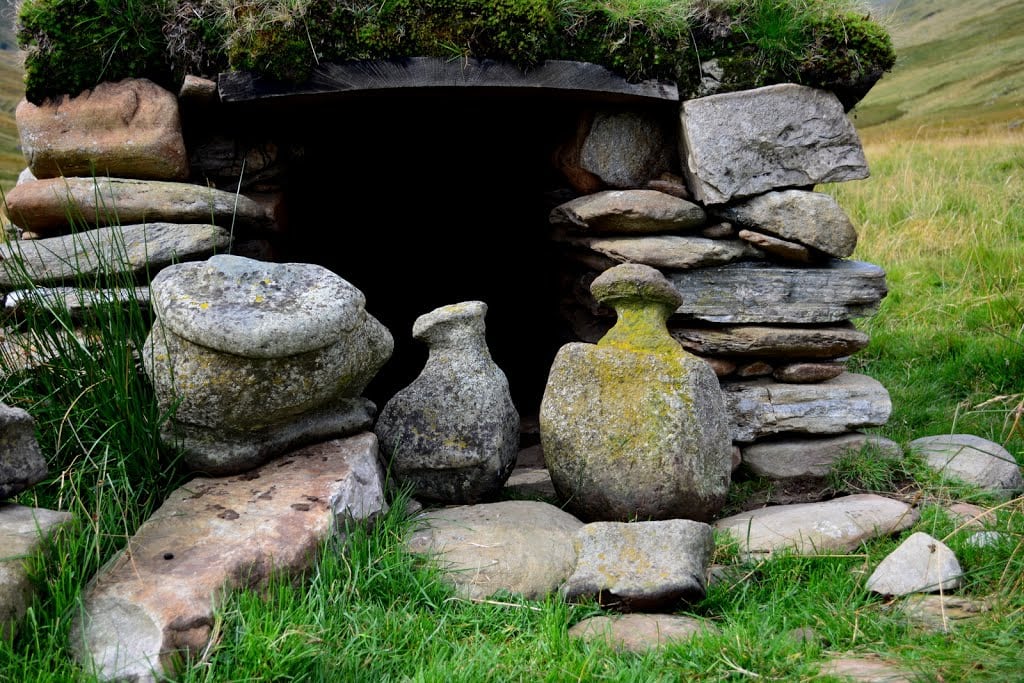
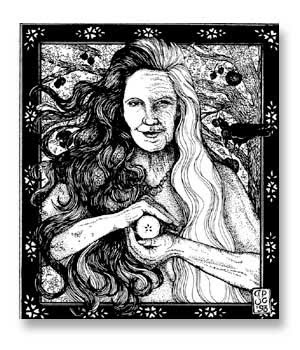

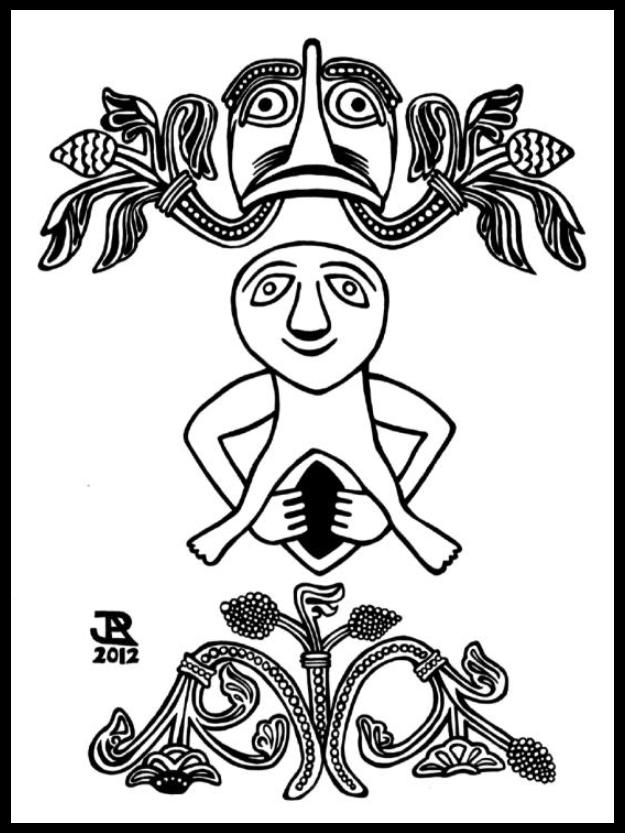
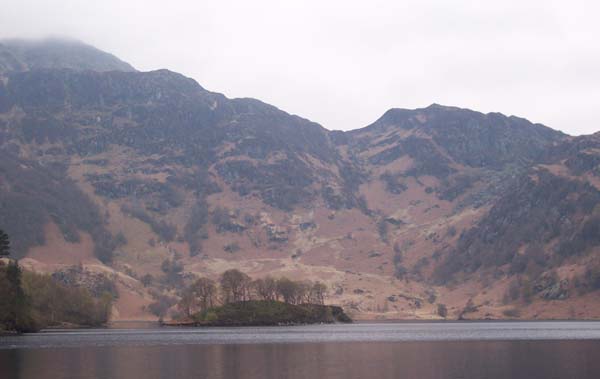
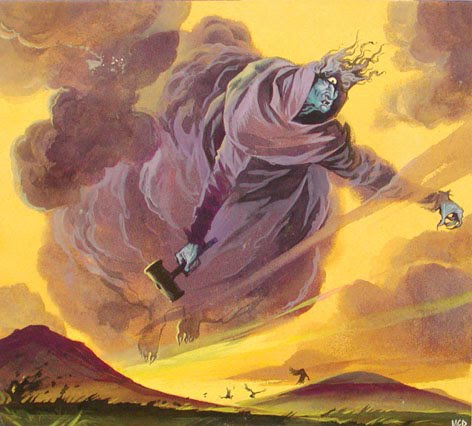
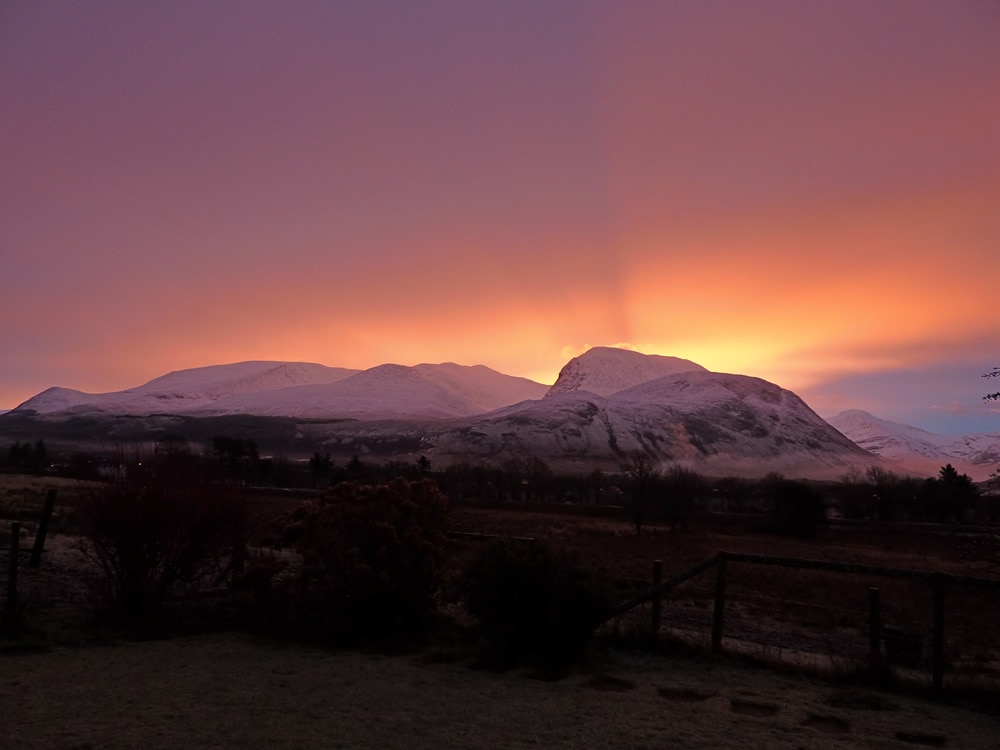
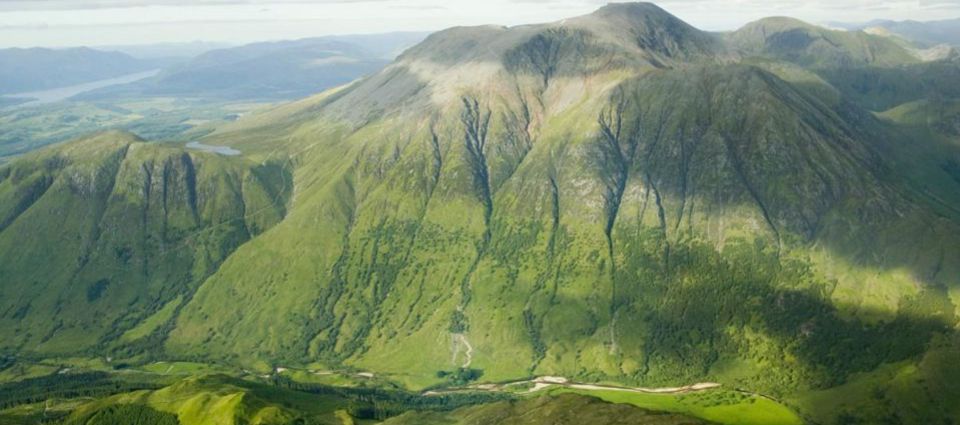

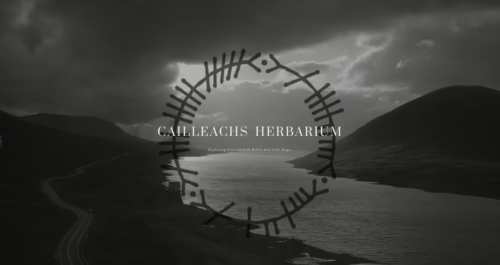
2 comments
I really have enjoyed reading these two essays. When we started writing the Celtic paganism book for people in prison I started with the first “biography” being the Caillich . I decided that if I could write a short description of her , and then none of the other gods and goddesses Gaulish, Brythonic or Gaelic would be intimidating. She is so incredibly bioregional , I live in Caledonia County in Northern New England where the land looks like Scotland or Scandinavia due to all of the glaciers . This area was mostly settled by Scottish people , which I have a lot of ancestry from as well, and the springtime is basically a battle between winter and summer , right now it’s snowing but a week ago everybody wore T-shirts. We don’t really have springtime , so I can relate a lot to the Caillich and Angus and bride . This time of year is the best for seeing the majestic Caillich , the grasses dead , the trees have no leaves , the snow is mostly gone so everywhere you can see the rock outcroppings and the boulders . There is something very visceral about her , a goddess that cannot be intellectualized , someone who you feel in the weather in the land in your own bones.
With so many complex aspects to her or to the pantheon of just her , it was hard thinking of how she would relate to somebody in prison. Especially because many have almost no time outside or any connection to the bioregion . So the prayer that I decided upon was her being the oldest of all beings and the stories of her being turned into stone waiting , because so much of being in prison is excruciating boredom with nothing but the same four walls , and I thought the gift that she could bestow on someone trapped like that is endurance .
I find her stories connected to the Isle of Man interesting because they connect her to Manannan mac Lir, whose name comes from that island and is not one of the Tuatha. He is, like the Caillich , his own being who transcends different pantheons . That she is his lover is an interesting hint at how old he really is. Also her connection to cranes and him with his crane bag , her connection goes to the crane stance like you pointed out , but she also rides on a crane or turns into a crane . She is connected to everything from lakes to whirlpools to the mountains to rock outcroppings , where my mother’s main clan comes from has a Carlin’s tooth, to dear, to magical cattle , to the God of the ocean , to boulders , to hunting. She doesn’t seem to be related much to domestication of crops or animals but to come from a more primal earlier time and I wonder if her connection with Manannan hence perhaps to when people were fisher – hunter – gatherer societies. Because her connection with hunting doesn’t seem to be the medieval royalty “sport .”
I know that we probably will never know exactly what she meant to people long ago and part of that is she is so versatile especially connected to the bioregion that she can be whatever the land and the tribal culture around that land needs , she is almost like a territorial goddess except she is found everywhere . She’s fascinating to me because of her lack of connection to Roman Celtic history or the medieval writings about the gods and goddesses of Ireland and Britain , what we know of her is from genuine folklore . Some people say that she’s very modern because nothing was written down about her until rather recently but how many peasants were literate?
I’m just very happy to see people embracing her especially in all of her divine diversity. I have noticed that the people who seem to have the more accurate perceptions and information are people who live where she does even if it’s not Scotland or Ireland or the Isle of Man or Scandinavia , she definitely has a connection to boulders, mountains, lakes , deer, the winters without a definite ending date and the ocean. We have all of that except the ocean and so after writing about her and studying her so much I realize she is that primordial feeling I’ve had ever since I was a child climbing the boulders in the green mountains surrounded by lakes .
And that was why it was hard to think of how to have a prayer for a goddess who is so embedded in the landscape for people who are in prisons far from home , where they don’t know the land , and they are kept inside with artificial light without any of her freedom . The only thing that came to me was the endurance of stone .
I’m really grateful people are sharing their experiences with her, I’m grateful when people share their personal experiences with any gods or goddesses or bioregions or ancestors but I’m especially glad that she has stayed alive throughout recent modern times as well as the Celtic reconstructionist lack of acknowledgment in general. She is probably the most mysterious goddess I’ve ever contacted until I remember touching folders covered with lichen, swimming in very cold deep glacier lakes and having deaer surround me .
Yes, i have always felt that the Cailleach, Bodach are something more than just the “deity” of winter. The cailleach is one force that can teach us survival, paitence and wisdom in our lot in life. The land is everywhere and too me that is what she represents, expecially in the folk tales of the scottish and irish people. I like the idea of “the endurance of stone” really interesting thought :)